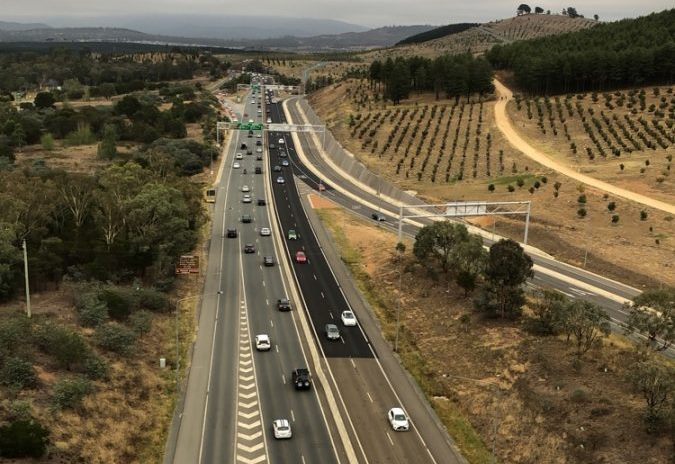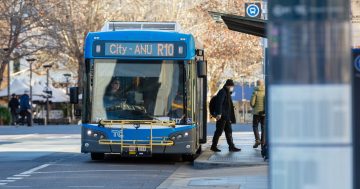
Move along: Canberrans spent 52 minutes travelling to and from work each day in 2017. File photo.
It’s taking longer for Canberrans to travel to and from their workplace as new data shows commute times have seen a staggering increase over the past decade.
According to the Melbourne Institute’s latest Household, Income and Labour Dynamics in Australia (HILDA) survey, Canberrans’ average weekly commuting time has increased by 20 minutes since 2002.
In 2002, it took ACT workers on average 31.3 minutes to commute to and from work each day. That figure has now increased to 51.5 minutes in 2017.
Sydney (71.1 minutes), Brisbane (66.7 minutes) Melbourne (65.4 minutes), Perth (59.3 minutes) and Adelaide (56.3 minutes) had longer commute times than the ACT in 2017.
Workers in the Northern Territory had the shortest commutes in 2017, averaging close to 34.7 minutes per day.
While travel time in the major capital cities only experienced about a 20 per cent increase over the past 15 years, the ACT has seen a staggering 64 per cent increase, the highest in the nation.
Work commute times in the ACT peaked in 2014 at 55.3 minutes but dropped 3.8 minutes over the next three years.
New Transport and City Services Minister Chris Steel believes the increase in commute times reflects Canberra’s rapid growth over the past 15 years and said the data was recorded before the new public transport network.
“The figures from the HILDA survey show that commute times have been steady since about 2011 at about 50 minutes round trip between work and home,” Mr Steel said.
“Since this survey was undertaken several major road upgrades have been completed with an introduction of the light rail system. As our city grows, the Government is building a better public transport network to keep Canberra moving.

Mr Steel said the increase in commute times reflects Canberra’s rapid growth over the past 15 years. Photo: George Tsotsos.
“The ACT Government remains committed to delivering a mix of public transport and active travel initiatives that support Canberrans to make sustainable travel choices.
“The ACT Government is also committed to road improvements and upgrades that support those who need to commute by private vehicle.”
The ACT Government monitors journey times on the major road network in near real-time using a Bluetooth journey time system Addinsight, which Mr Steel said helps the Government to manage congestion to “ensure future commute times are reliable”.
Mr Steel said a number of current and recent duplication projects since the survey was completed will lower travel times, including the Cotter Road duplication, Ashley Drive duplication, stage one of Gundaroo Drive duplication, Horse Park Drive duplication and Coppins Crossing Road duplication.
Mr Steel also expects the ACT Government’s new road projects will also improve Canberrans’ commute times, including the new 6.4-kilometre corridor connecting Gungahlin and Belconnen duplication, which includes new on-road cycle lanes between Ginninderra Drive and the Barton Highway.
The Government also has plans for the duplication of Athllon Drive to add more lanes in each direction, replacing the bottleneck intersection on the Monaro Highway, as well upgrade intersections on Southern Cross Drive and Starke Street, Belconnen Way and Springvale Drive, Kent Street and Novar Street, and Launceston Street and Irving Street.

Daily commuting times have increased across Australia. Graph credit: The Conversation.
The survey, based on interviews with around 17,000 working Australians aged 15 years and older, analysed trends in commuting times in Australia over the 15 year period and the distance between a person’s place of residence and their place of work, including those who work from home.
Average daily commuting times across Australia have increased from 48.8 minutes in 2002 to 59.9 minutes in 2017.
The survey found that Australian workers averaged 3.7 hours’ commuting time per week in 2002, which increased to 4.5 hours by 2017, despite the fact that nearly 28 per cent of workers live and work in the same postcode and nearly 55 per cent of workers live within 10 kilometres of their place of work.
The survey found that though workers in cities may live relatively close to their workplace and may have more transport options, traffic congestion, urban expansion and poor public transport services would have influenced the increase in travel times.













